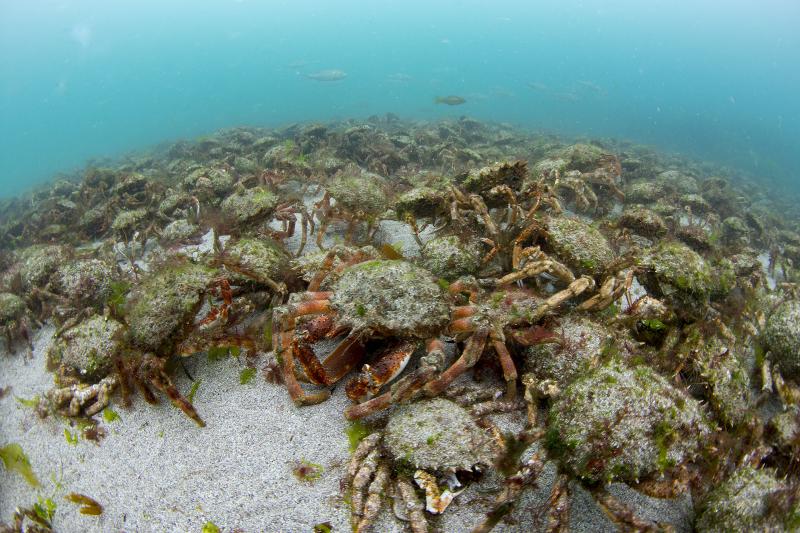
Old friend of Coastwise, and author of 'Great British Marine Animals' and 'Benny the Blenny's Shallow Sea Adventure', Paul Naylor gave members another fascinating insight into some of the strange things that happen underwater and in a rockpool.
Paul, "a marine biologist who happens to take photographs" (in his own words) has built up a deep knowledge of marine animal behaviour, in particular at Wembury, a wonderful spot for marine life and his home beach.
Paul pointed out that the shallower the water the longer a scuba diver can stay under, and his preference is for snorkel depth, which is fine to see the majority of animals.
He started by showing the huge congregations of spider crabs for mutual defence during their vulnerable carapace-moulting, and explained how other species such as shore crabs manage this differently, with up to 17 moults in a 4-year life.
Cuttlefish can change their skin colour quickly and Paul showed with film clips how quick this reaction to the surroundings actually is – changes from light to dark can happen with 1 second. He showed the hatch from an egg cluster called Sea Grapes, and how the cuttlebone is visible through the transparent skin of a very young fish.
Nothing is immune from Paul's investigative curiousity, and limpets are no exception. As high-tide roaming grazers, they always return to the same spot as the tide goes out, but do not necessarily return by the same route using the smell of their mucus trails. Other navigation methods seem to be used, so that they can take a short-cut back to base rather than retracing their slime trail. Also, what had been thought of as aggressive attacks on other limpets is possibly only an opportunistic individual seeing a chance to graze on the marine growths on another's back. However, any limpet is very wary of anything on its shell as dog-whelks will attack by drilling holes through the shell with their rough radula to get at the animal inside.
One of Paul's favourite animals is the Blenny, and he's identified 28 individuals at Wembury by the unique markings beneathe their eyes. These have been linked to territories and mates, and as a result are probably very annoyed at this intrusion on their privacy, although they do seem happy for him to obsrve their antics, such as evicting a Velvet Swimming Crab from a crevice without damage from the crab's claws. They are also rather promiscuous, with some females happy to form a threesome or more.
Benny the Blenny would like members to know that, ably assisted by Teresa, Paul's wife, that he maintains a blog at www.bennytheblenny.com/blog/ where they can read all about his goings-on.There's also a rock pool page suitable for primary schools, with a whiteboard presentation and printable PDF, all of which was produced in association with the Association of Science Education.
Paul concluded by giving some advice on underwater photography, another area where he's clearly expert.
Members will consider themselves very lucky that Paul will travel across Devon to give them the benefit of his expertise, with only a donation to charity in return.
Pictured R, from top, courtesy of Paul Naylor marinephoto:- Spider Crabs in moulting group at St Brides, a Cuttlefish pair at Babbacombe, and a Tompt Blenny at Wembury.

